Vul. Melnyka, 18 – Ukraina Sport Complex
ID:
1964
The Ukraina (formerly Spartak) Sport Complex is comprised of a team sport venues and outdoor tennis courts. The courts were laid in between 1925-1927. The design of this “Sports Arena” reflects the combined efforts of architects Myroslav Tratch, Mykola Habrel, and Oleksandr Kazantsev.
Architecture
The Ukraina arena is set among residential buildings, and is made primarily of steel and reinforced concrete. The main structure has a rectangular main gym with steel truss roof that spans 48 meters. Service structures have been attached to the main building on three sides which are finished in natural stone and textured stucco. The vestibule is finished in ceramic tile panels depicting athletic themes (M. Hladkyi, A. Kapysh). Open tennis courts are located behind the gymnasium. The central façade of the building echoes the rounded arch style of the main hall and done entirely in glass.
Personalities
Myroslav Tratch – architect
Mykola Habrel – architect
Oleksandr Kazantsev – architect
M. Hladkyi – sculptor
A. Kapysh – sculptor
Wacław Kuchar – hockey and tennis athlete, 1920s–1930s
Albert Mauer – hockey and tennis athlete, 1920s–1930s
Josyp Herda – tennis player, 1930s–1940s
Fedir Kulechko – tennis player, 1930s–1940s, noted Ukrainian coach
Sources
- J. Bryl, Wacław Kuchar, (Warszawa: Krajowa Agencja Wydawnicza, 1982), 216.
- Księga pamiątkowa 35-lecia lwowskiego sportowego klubu "Pogoń" (Lwów, 1939), 160, 181, 191-192, 304.
- Lwów. Turystyczny przewodnik, (Lwów: Wydawnictwo "Centrum Europy"; Kraków: Wydawnictwo "Via Nowa", 2001), 131.
- В. С. Вуйцик, Р. М. Липка, Зустріч зі Львовом, (Львів: Каменяр, 1987), 166.
- Львів. Туристичний путівник (Львів: Видавництво "Центр Європи", 1999), 229-230.
- Т. О. Трегубова, Львів. Архітектурно-історичний нарис, (Київ: Будівельник, 1989), 244-245.
- Ю. Кордіяк, Чемпіони живуть у Львові. Нариси, статті, (Львів: Каменяр, 1980), 27.
Material compiled by Khrystyna Kharchuk and Bohdan Mykhailyunio
Edited by Ihor Zhuk
Media Archive Materials
Related Pictures
-
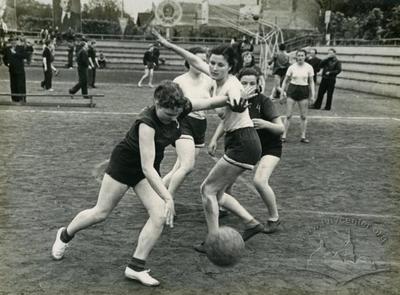 Гра в баскетбол на майданчику стадіона "Спартак" на вул. Мельника, 18
Гра в баскетбол на майданчику стадіона "Спартак" на вул. Мельника, 18
-
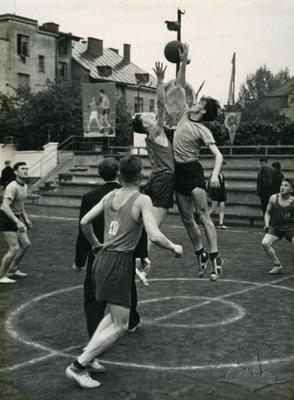 Чоловіча команда баскетболістів на майданчику стадіона "Спартак"
Чоловіча команда баскетболістів на майданчику стадіона "Спартак"
-
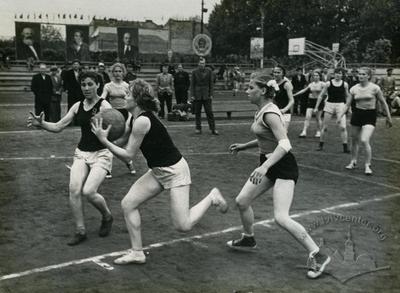 Жіноча баскетбольна команда на спортивному майданчику стадіона "Спартак"
Жіноча баскетбольна команда на спортивному майданчику стадіона "Спартак"
-
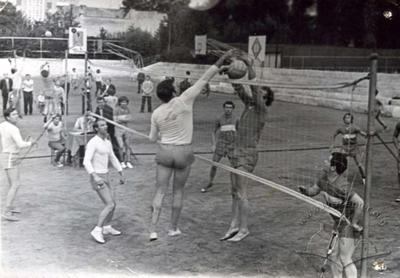 Змагання на волейбольному майданчику стадіону "Спартак"
Змагання на волейбольному майданчику стадіону "Спартак"
-
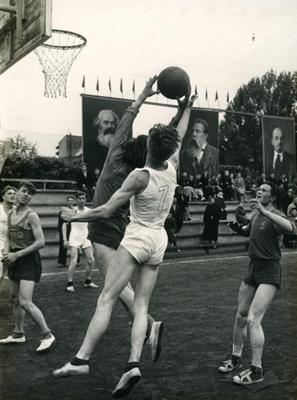 Змагання з баскетболу на стадіоні "Спартак"
Змагання з баскетболу на стадіоні "Спартак"
-
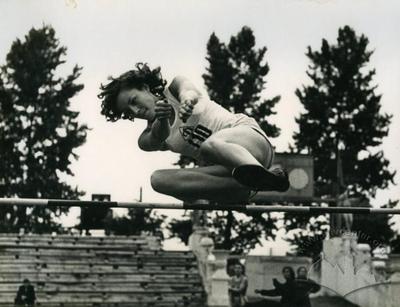 Стрибок у висоту під час змагань на стадіоні Спартак
Стрибок у висоту під час змагань на стадіоні Спартак









